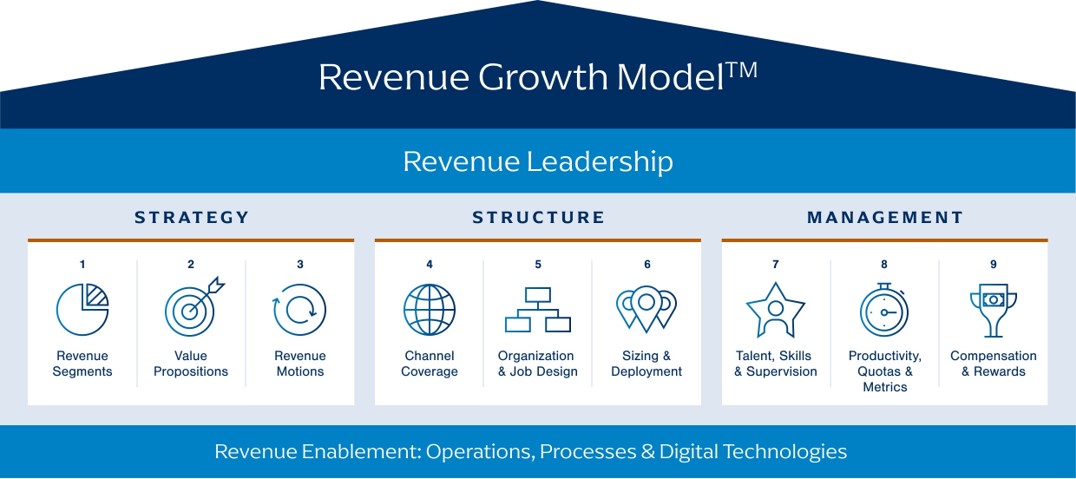Businesses that demonstrate the ability to deliver consistent, above-market organic growth are worth more. Developing and maintaining this capability can be thought of in (3) parts: Strategy, Structure and Management.
Strategy
Start with strategy. Define the most attractive segments where the business has a right to win. Articulate pricing strategy by segment and how the offering will be brought to market. Understand what drives customers to a purchasing decision. Craft your messaging and value propositions to resonate with your ideal customer profile. Scope marketing, sales and post-sales motions to align with how customers buy and their value to the business.
Structure
Once strategy is defined, the business is ready to invest in the structure needed to execute. Structure includes the marketing, sales and service channels (digital, 3rd party, direct team members, etc.). The next decision is jobs and organizational structure. The organization is then sized (headcount) in alignment with the financial plan. Resources are deployed centrally and locally and against priority customers. Sales territories and account portfolios are crafted. Service deployment models are defined (dedicated, pooled, etc.).
Management
With the structure defined, it is time to align the management systems and levers that drive daily execution. Populate the organization with the needed skills and capabilities. Enable talent with onboarding, product and skill training, and career development frameworks. Maintain processes such as planning, pipeline, forecasting and management cadence. Leverage goals, incentives, and other rewards and recognition programs to motivate execution.
Underscore the model with Revenue Operations – people, process, and technology – that enable execution. Task this function with supporting price governance, new product launches, voice of customer and cross-functional efforts.
Alexander Group’s Revenue Growth Model™ serves as a holistic framework to build, evaluate and optimize the GTM model. In part 2 of the series, we will offer a view of “great” GTM, covering the strategies and tactics that high-performing organizations utilize to deliver profitable, above-market growth. Finally in Part 3 of the series, we’ll cover the five levers of GTM value realization including leadership, enablement, planning, communication and ongoing monitoring.






